Healthy Cities Toolkit
Global Centre on Healthcare and Urbanisation, Kellogg College

Active travel
Moderate positive impact based on uncertain evidence with low resource implications
Cite as Heneghan C, Onakpoya I. Active Transport. Oxford Healthy Cities Toolkit
- Access data
Description
Active travel, also described as active transport or transportation, is defined as making journeys that involve a level of physical exercise [UK Dept for Transport, 2022 ].
It can include walking, cycling, skating or skateboarding (to name a few) and is highly favourable when commuting to work or school. In the literature, active travel was measured using self-reported instruments, surveys or questionnaires, interviews or focus groups, accelerometry, digital tracking devices or GPS.
Fourteen reviews considered the health impacts of active transport involving nearly 500 primary studies. Overall, active travel had a positive effect on increasing rates of physical activity, reducing non-communicable diseases, and improving mental health.
Designing community environments that make active travel convenient, safe, attractive, cost-effective, and environmentally beneficial is likely to produce the greatest impact.
The included reviews represented the ages of the general population, with one review focusing on children and young people [Audrey 2015 ], and two reviews on older people [ Barnett 2017 ; Graham 2020 ].
Three reviews restricted their geographical scope, with one review from the UK [ Graham 2020 ]’ Korea [ Kim 2019 ] and Latin America [ Gomez 2015 ].
Most (85%) reviews assessed rates of physical activity and examined the relationship of the urban environment in promoting active transport. Factors that supported active travel include:
- Adequate infrastructure (e.g. cycle lanes) and connection/continuity of cyclable and walkable surfaces [ de Carvalho 2012 ; Gomez 2015 ; Mölenberg 2019 ; Rachele 2019 ; Sallis 2015 ; Smith 2017 ; Stankov 2020 ]
- Smaller and calmer car traffic, offering greater safety for cyclists and pedestrians [ de Carvalho 2012 ; Gomez 2015 ]
- Short distances of trips [de Carvalho 2012 ; Gomez 2015 ; Sallis 2015 ; Stankov 2020 ]
- Aesthetics of the streets and facilities (cleanliness, low noise, presence of trees/greenery) [ de Carvalho 2012 ; Rachele 2019 ; Sallis 2015 ]
- Mixed land use, combining residential, commercial, and leisure spaces and facilities within a concentrated area [ Gomez 2015 ; Kim 2019 ; Rachele 2019 ; Sallis 2015 ]
- The financial cost and economic benefits [ de Carvalho 2012 ; Sallis 2015 ]
- The environment and sustainable mobility [ de Carvalho 2012 ; Gomez 2015 ; Sallis 2015 ]
Factors that discouraged cycling were related to geography (e.g. weather or terrain) and individual factors (e.g. age, sex, education levels). The lack of connectivity of cycling routes, zoning and land use distribution, and low petrol prices encouraged individuals to use cars. [ de Carvalho 2012 ]
Factors that both encouraged and discouraged active travel were dependent on socio-economic conditions and economic development, which drove the adoption of public policies. [de Carvalho 2012 ]. For example, in Australia, lower economic status was a factor that reduced the use of bicycles by children attending schools, whereas, in Brazil, lower socio-economic profiles were linked to higher rates of active travel when commuting to schools.
For children and young people, multi-component and single-component interventions deployed at schools increased students’ activity levels and reduced parental driving [ Audrey 2015 ]. Factors such as distance from home to school, infrastructure improvements (e.g. cycle lanes, calming traffic schemes), education, and non-car use at baseline influenced active travel.
For older adults, neighbourhood walkability, access to destinations and services and recreational facilities, crime/personal safety, residential density, walk-friendly infrastructure, street lighting, the presence of greenery and aesthetically pleasing scenery were positively associated with physical activity and walking. [ Barnett 2017 ; Rachele 2019 ]. In the UK, cost, availability, connectivity and infrastructure, such as benches and bus shelters, were crucial in enabling active travel among elderly individuals [ Graham 2020 ].
One review identified positive effects for people with diabetes, cardiovascular disease, breast and colon cancer, and dementia, as well as all-cause mortality and the incidence of overweight and obesity [Xia 2013 ].
One review focused on mental health and found that people who actively commuted to work (cycling/walking) reported improved mental health outcomes, but this effect was reduced after baseline mental health was accounted for [Moore 2018 ].
One review examined policies to promote active travel, which found that infrastructure is at the core of promoting active travel, but policies may work best when implemented in comprehensive packages [ Winters 2017 ].
Strength of the evidence
Strength of the evidence
Three reviews used a tool to assess the risk of bias or quality, which had moderate [ Barnett 2017 ], low [Moore 2018 ] and very low-quality evidence [ Audrey 2015 ].
The remaining 11 reviews were ranked uncertain, giving an overall rating of uncertain evidence.
Despite the uncertainty in the quality of the evidence, action should not be postponed until stronger evidence is developed, as the health, environmental, and economic benefits of active travel are clear.
Searches for evidence were conducted between 2010 and 2019 in a median of six databases. Ten of the included studies were formal systematic reviews (two with meta-analyses, one using mixed methods, and one with qualitative studies), three were literature reviews, and one was an overview of systematic reviews.
Resource Implications
Resource Implications
Resource implications were graded low because of the extent of the co-benefits afforded by active travel. In addition to positive health outcomes, reviews reported the economic and environmental benefits, including reducing traffic congestion, accidents, and air and noise pollution [ Graham 2020 ; Sallis 2015 ; Smith 2017 ; Winters 2017 ; Xia 2013 ].
One review estimated the combined economic benefit of eliminating short motor vehicle trips in 11 metropolitan areas in the upper mid-western USS to exceed $8 billion/year [ Xia 2013 ].
Micro-level interventions that increase attractiveness and convenience for active travel are low-cost and easier to implement than macro-level interventions for street design and layout [ Barnett 2017 ; Winters 2017 )].
The rising costs of car transport and petrol prices have reportedly increased the uptake of active travel [ de Carvalho 2012 ; Mölenberg 2019 ]. The implementation of economic incentives, such as congestion and parking fees, was found to promote active travel and significantly improve health [Stankov 2020 ].
Recommendations
- Increase investment in infrastructure for pedestrians and cyclists to promote active travel.
- Use interdisciplinary teams involving those from the transport, planning, public health, and policy sectors should embrace opportunities to implement and evaluate active transport interventions.
- Invest in high-quality research, adjusting for residential self-selection, conceptually-driven choosing of built environmental attributes, and adjusting for key socio-demographic covariates.
- Research is needed to identify the optimal density threshold that supports active travel, which is important for informing planning policy and practice.
Related Resources
Related sources
- WHO (2018): Global Action Plan on Physical Activity 2018-2030 – More Active People for a Healthier World
- WHO (2020): Physical activity
- UK Department for Transport (2022): Active Travel – Local authority toolkit (guidance)
- UK Department for Transport (2020): Cycling and walking plan for England (policy paper)
- UK Department for Transports (2019): Future of Mobility – urban strategy (policy paper)
- Public Health England (2016): Active travel – a briefing for local authorities
- Healthy Places by Design (2001-2008): Active Living by Design
- Sustrans (2017): Active Travel Toolbox
- Open Streets Project
- Active Living Research: Tools and Resources
- Living Streets: UK Charity for Everyday Walking
- Choose how you move: A smarter way to travel in Leicester and Leicestershire
- Transport Scotland: Walking and cycling
- Imperial College London: Active travel
- National Walk to Work Day: UK Public Health Network
References to Reviews
References of Reviews
Audrey 2015. Healthy urban environments for children and young people: A systematic review of intervention studies. Health & place 36: 97–117.
Barnett 2017. Built environmental correlates of older adults’ total physical activity and walking: a systematic review and meta-analysis. The international journal of behavioral nutrition and physical activity 14(1): 103.
de Carvalho 2012. Cycling to achieve healthy and sustainable alternatives . Ciencia & saude coletiva 17(6): 1617–1628.
Gomez 2015. Urban environment interventions linked to the promotion of physical activity: a mixed methods study applied to the urban context of Latin America. Social science & medicine 131: 18–30.
Graham 2020. Older people’s experiences of everyday travel in the urban environment: a thematic synthesis of qualitative studies in the United Kingdom. Ageing & Society 40(4). Cambridge University Press: 842–868.
Kim 2019. How Does the Built Environment in Compact Metropolitan Cities Affect Health? A Systematic Review of Korean Studies. International journal of environmental research and public health 16(16). DOI: 10.3390/ijerph16162921 .
Mölenberg 2019. A systematic review of the effect of infrastructural interventions to promote cycling: strengthening causal inference from observational data. The international journal of behavioral nutrition and physical activity 16(1): 93.
Moore 2018. The effects of changes to the built environment on the mental health and well-being of adults: Systematic review. Health & place 53: 237–257.
Rachele 2019. Neighbourhood built environment and physical function among mid-to-older aged adults: A systematic review. Health & place 58: 102137.
Sallis 2015. Co-benefits of designing communities for active living: an exploration of literature. The international journal of behavioral nutrition and physical activity 12: 30.
Smith 2017. Systematic literature review of built environment effects on physical activity and active transport – an update and new findings on health equity. The international journal of behavioral nutrition and physical activity 14(1): 158.
Stankov 2020. A systematic review of empirical and simulation studies evaluating the health impact of transportation interventions. Environmental research 186: 109519.
Winters 2017. Policies to Promote Active Travel: Evidence from Reviews of the Literature. Current environmental health reports 4(3): 278–285.
Xia 2013. Co-benefits of replacing car trips with alternative transportation: a review of evidence and methodological issues. Journal of environmental and public health 2013: 797312.

- The benefits of being active
- The five big issues
- Read our strategy
- Demographics
- By topic/issue
- About our research
- About people
- About places
- Activity Check-in
- Local Area Insights
- Market Segmentation tool
- Innovation and digital
- Cost of living
- Safeguarding
- Facilities and planning
- Grassroots organisers
- Schools and teachers
- National governing bodies
- Digital Marketing Hub
- Image library
- Funding explained
- Other funding options
- Frequently asked questions
- This Girl Can
- We Are Undefeatable
- Play Their Way
- Active Partnerships
- Be Inspired
- Code for Sports Governance
- Commonwealth Games
- Equality and diversity
- Long-term partnerships
- Place partnerships
- Use our School
- Return to play
Active Design
- Featured content
- News archive
Active Design sets out how the design of our environments can help people to lead more physically active and healthy lives - it's about helping to create 'active environments'.
- Active Design guidance
- What is new?
- Foundational principle - activity for all
- Applying the principles
- Further resources
- Theme 1: supporting active travel
- Theme 2: active, high-quality places and spaces
- Theme 3: creating and maintaining activity
Where we live, work, travel and play has a major role in shaping our activity choices.
By applying Active Design’s 10 principles to our built and natural environments, we can create active environments that encourage people to be active through their everyday lives.
With a shared belief and commitment to the great value that well designed places can have on health and wellbeing, we've worked with Active Travel England (ATE) and the Office for Health Improvement and Disparities (OHID) to produce this updated version of the Active Design guide.
What is Active Design?
The video consists of a series of animated scenes showing how the Active Design principles can positively impact physical environments and peoples’ lives, set to a gentle music track with voiceover narration.
Voiceover: We know that being active is important for our physical and mental health.
A woman walks happily through a park in an urban area.
Voiceover: But modern day living often makes it difficult to fit activity into our daily lives.
The same woman is shown looking less happy in three scenarios:
Stuck in a traffic jam.
Working on her laptop.
Flicking through TV channels while sat on a sofa.
Voiceover: Creating environments that encourage us to be active can help us all to move more and reach the Chief medical officer’s recommended amount of weekly physical activity.
The woman appears again, standing in a blank abstract space next to a signpost, while four scenarios appear around her:
A man with a prosthetic leg using an adapted bike on a dedicated bike lane.
An elderly man leading a yoga class in a park.
A young boy flying a kite in a park, while other people ride scooters and play badminton in the background.
A young adult male and female walk a dog along a footpath.
The four scenarios move off the screen.
The camera zooms in on the woman next to the signpost.
She taps the signpost, which spins around to reveal the text ‘Physical Activity Guidelines’ at the top of the post. Three arrows on the signpost point in different directions; one with a tree icon, one with a cycling icon, and one with a running icon.
The woman and the signpost transition off-screen.
Voiceover: Active Design from Sport England, supported by Active Travel England and Office for Health Improvement and Disparities,
The text “Active Design” appears on screen, with 21 colourful icons representing different forms of activity shown underneath.
The Sport England, Active Travel England, and Office for Health Improvement and Disparities logos appear on the screen underneath the icons.
Voiceover: helps those involved in designing and adapting our local neighbourhoods to create active environments.
A map rolls over the logos showing a top-down street view.
Several hands begin to place pins with different coloured icons, from the Active Design icons shown previously, on the map.
Voiceover: As well as supporting people to get more active, the creation of active environments can also help with other important agendas.
The map rolls back up and disappears, revealing underneath a tree branch.
A butterfly gently lands on the branch.
Three text headings appear above the butterfly after it lands: ‘Decarbonisation’, ‘Equality’, and ‘Easing Travel Costs.’
The camera moves up quickly above the clouds, leaving a clear space on screen.
Voiceover: Active Design consists of 10 principles.
The 10 Active Design principle icons appear.
The ‘Activity for All’ icon is largest and shown at the centre, with the other 9 icons equally spaced around it.
The 9 icons orbit the Activity for All icon briefly, before being pulled into it and disappearing.
Voiceover: Activity for All is the foundational principle and is essential to the delivery of all the active design principles.
The words ‘Activity for All’ appear underneath the icon.
The other 9 principle icons re-appear.
A blue circle the same colour as the ‘Activity for All’ icon wraps around all 10 principles.
The blue circle is absorbed into the 10 principle icons, which rotate slowly.
Voiceover: It states that all environments should be designed to support physical activity equitably across all ages, ethnicities, gender and abilities.
The principle icons merge together.
A series of different character faces appear in small bubbles, representing different ages, ethnicities, genders and abilities.
A thin dashed line connects the different faces.
The faces merge together and the principle icons return to the screen.
Voiceover: The remaining principles are grouped into three themes: 1. Supporting Active Travel 2. Active, High-Quality Places and Spaces; and 3. Creating and Maintaining Activity.
The principle icons rotate slowly around.
As each theme is mentioned, the relevant icons rotate to the top of the screen.
The name of each theme appears as on-screen text in turn:
Supporting Active Travel.
Active, High-quality Places and Spaces.
Creating and Maintaining Activity.
Voiceover: Supporting Active Travel
The text ‘Supporting Active Travel’ appears on-screen, with the three icons showing the relevant principles displayed above the text.
Voiceover: In the past, many places have prioritised vehicles over people in their design, resulting in environments that can be unwelcoming or difficult to walk, wheel or cycle in.
A top-down view of a busy crossroads appears. There is lots of vehicular traffic. One car is parked partly on the road and partly on the pavement. Some people are waiting to cross the road.
Traffic sound effects (engine noise, car horns) are heard over the music.
We cut to a street-level scene, looking across the road towards an elderly lady waiting to cross. Lots of cars quickly drive past.
The camera zooms in towards the lady, who looks alarmed.
Voiceover: However, if a place is designed to support and encourage walking, cycling or wheeling we are more likely to do so.
The view returns to the top-down view of the crossroads.
A bar of light wipes across the screen, revealing the same crossroads with Active Design principles applied. The following differences can be seen:
Fewer car lanes, less cars, and slower traffic.
Dedicated cycle lanes and bike parking.
Pedestrian crossings and clear road markings.
Wider pavements, with planters, trees, benches and tables.
More pedestrians and more cyclists.
The level of background traffic noise is reduced.
Voiceover: It’s the simplest and most inclusive way of getting us to incorporate activity into our daily lives. And it has great benefits for the environment too.
We cut back to the street-level scene, where we can now see a zebra crossing and the dedicated cycle lanes. The road now has a central reservation.
The elderly lady from before is now crossing the road happily while traffic stops at the crossing.
Meanwhile, the lady from the first scene in the video walks across the foreground, while a cyclist on an adapted bike cycles past.
Other pedestrians and cyclists can also be seen.
Voiceover: Creating walkable communities, connected active travel routes and co-locating facilities are the key elements in supporting active travel.
A street map appears on screen.
There is an icon of a house in the top right of the map.
A group of other icons appear in a cluster on the left-hand side, to represent different co-located facilities.
Dashed lines appear on the map to connect the house to the different facilities, representing active travel routes.
The map shrinks to form part of a split-screen panel of three different scenes. The other two scenes are the elderly lady crossing the road, and a young cyclist smiling.
The relevant Active Design principle icon appears above each scene.
Voiceover: Active, High-Quality Places and Spaces
The Active Design principles briefly slide into view.
The text ‘Active, High-quality Places and Spaces’ appears on-screen, with the four icons showing the relevant principles displayed above the text.
Voiceover: We know that the places and spaces we interact with in our daily lives play an important role in how much activity we do. If designed well, this can support and encourage us to be more active.
A split-screen of three different scenes appears.
One scene is two adult females riding scooters through a pretty park.
Another scene features the lady from the start of the video jogging through the park.
The third scene features the young smiling cyclist shown moments before.
Yet the quality and the access to these areas can vary.
The split-screen panel is replaced by a view of an empty, messy park, with litter and an upside-down shopping trolley.
Voiceover: A network of open spaces and well-designed quality places offer chances to socially connect and take active journeys, especially if there are features throughout the trip such as, signage, bike parking, toilets and seating.
A bar of light wipes across the screen, revealing the same park with Active Design principles applied.
The scene slowly pans from right to left.
The following differences can be seen:
Park is clean and tidy.
There are benches, bins, and lighting.
People of various ages, ethnicities, genders and abilities partake in a range of different pursuits within the park.
The park now has signage, bike parking, toilets, seating, and a playground.
Voiceover: Creating a network of high-quality streets and open spaces, and ensuring that these are easy to access through active travel networks can encourage and enable us to be active.
The park shrinks down to form part of a split-screen view, incorporating three scenes.
One scene is a top-down street map view.
The second scene is the playground from the park, with children using the apparatus.
The final scene is a boy flying a kite in the park, watched by his grandfather.
Voiceover: Creating and Maintaining Activity
The text ‘Creating and Maintaining Activity’ appears on-screen, with the two icons showing the relevant principles displayed above the text.
Voiceover: It’s essential that once these spaces are created, they are well used and maintained and become part of the community.
We see a pretty park in an urban environment. There is no-one in the park.
A bar of light sweeps across the screen, revealing the same park being actively used.
A man sweeps the footpath.
A lady plants flowers.
A duck is swimming in the pond.
An elderly gentleman approaches a noticeboard, with a flyer in his hand.
Voiceover: Designing spaces to be flexible and to accommodate changing and varied uses over time, can stop a space from becoming unused.
The camera zooms in on the elderly gentleman as he places a poster on the noticeboard advertising a Yoga class.
We can see other posters on the noticeboard advertising a walking group and a ‘Buggy fit’ class.
The view slides across to reveal a scene in the same park, with the elderly gentleman now leading a yoga class with participants of various ethnicities.
Voiceover: Maintaining our high quality, flexible places and activating spaces is essential to encouraging physical activity for all.
The yoga class scene shrinks down to form part of a split-screen view, incorporating one other scene.
The other scene features a young man sweeping in the park.
Voiceover: The 10 Active Design principles together can help develop active environments, supporting us all to be more healthy and active.
The lady from the first scene in the video is seen happily walking against an urban backdrop. The scene takes place within a small circular frame in the middle of the screen.
Around this circle, the Active Design principle icons float into view. Once all on-screen, they slowly orbit around the walking lady.
Voiceover: Active Design: making the active choice, the easy choice for all.
The entire scene moves off-screen.
The words ‘Active Design’ appear within the blank space that remains.
The full set of Active Design icons appear underneath the text.
The words ‘Making the active choice the easy choice for all’ appear underneath the icons.
The web address ‘sportengland.org/activedesign’ appears underneath the text.
The guide seeks to help planners, designers and everyone involved in delivering and managing our places to create and maintain active environments.
The foundation principle of ‘Activity for all’ is supported by the remaining principles which are brought together under the three themes of ‘Supporting active travel’, ‘Active, high-quality places & spaces’ and ‘Creating & maintaining activity’.

The key documents
Launch webinar.
This video is a recording of the webinar used to launch the Active Design guidance.
The chair was Fiona Howie from the Town and Country Planning Association, with speakers including the deputy chief medical officer Dr Jeanelle de Gruchy and Sport England chair, Chris Boardman.
Expert panellists included:
James Scott - Urban & Civic
Julia Foster - David Lock Associates
Dinah Bornat - ZCD Architects
This new edition of Active Design, published in May 2023, reflects the latest research and practice in encouraging physical activity in the built and natural environment.
We undertook a literature review of recent publications and studies, policy and design guidance to identify gaps, new topic areas and usability improvements.
Following this, we ran extensive online and in-person stakeholder engagement sessions throughout the summer of 2022 to understand how Active Design was being used, where it could be improved, and what good practice could be shared.
There are the key issues and changes we've made:
Foundational principle
We've made 'activity for all' the foundational principle for Active Design.
This is centred around a focus on early engagement, co-design and consultation with communities to ensure needs are properly understood before designing to meet those needs.
Listen, learn, co-design.
Creating safe spaces
While this seems obvious, it’s sometimes that unintentional outcome of designing spaces with predetermined solutions that can make them unusable for some groups.
This is strongly linked to conducting good co-design.
Principles grouped into themes
To help users understand the principles a little better, we've grouped them into three themes:
- Supporting active travel
- Active, high-quality places and spaces
- Creating and maintaining activity
A user-friendly guide
Partners are time and resource-pressured, and so we've simplified the guide to be more ‘actionable’ and show examples through case studies and illustrative places.
Connecting to other policy priorities
While being active is our focus, partners have other priorities, such as, climate change.
However, Active Design shows how implementing the 10 principles can have crossover benefits to achieve some of the other policy priorities.
Active Design 3 links physical activity to environmental sustainability, reducing inequalities and economic growth.
Continuity with Active Design 2
We adopted an approach of don’t change for change’s sake.
While updating and adapting the content and elevating ‘activity for all’ as our foundational principle, we've retained the 10 principles.
All environments should support physical activity equitably across all ages, ethnicities, genders and abilities - enabling everyone to be active and build long-term active habits and behaviours.
This is essential for the delivery of all the principles of Active Design and is its foundational principle.

This principle has two stages:
Listening and learning
- Understanding different experiences
- Engaging and listening effectively
- Using local data and evidence
Considering issues that affect physical activity participation
- Create safe places
- Consider a wide range of activities
- Consider different experiences of using spaces

The principles of Active Design can be applied anywhere in our built and natural environments.
They have the most effect when combined with each other and can be applied from the largest scales to smallest details.
The mix of in-depth case studies and illustrative places presented below, show how the principles can be applied in a variety of places, from a city centre through to rural villages.

Case studies
Illustrative places.
Alongside the case studies and illustrative places under the ‘Applying the principles’ tab, further useful resources will be added here over time to build up a library of resources to help with delivering Active Design.
- UK Chief Medical Officers' physical activity guidelines Physical activity guidelines: disabled children and disabled young people - DHS… Uniting the Movement - Sport England National Design Guide Everybody active, every day - Public Health England Voice Opportunity Power What makes a park feel safe or unsafe? - University of Leeds Improving access to greenspace - Public Health England What are play streets? - Playing Out Cycle infrastructure design (LTN 1/20) - Department for Transport Manual for Streets - MHCLG Healthy Streets - Transport for London Essex Design Guide What is Universal Design - National Disability Authority Community champion approaches: rapid scoping review of evidence - PHE This Girl Can - Sport England
Active travel is the simplest and most inclusive way of getting people to incorporate activity into their daily lives and has numerous benefits for physical and mental health, the environment, the places we live, quality of life and social inclusion.

Principle 2 - walkable communities
Facilities for daily essentials and recreation should be within easy reach of each other by active travel means, making it more likely that people will make the journey by using other active travel modes.
Good active travel connections should be provided to extend the range of services that are accessible to people while remaining physically active.

Principle 3 - providing connected active travel routes
Encourage active travel for all ages and abilities by creating a continuous network of routes connecting places safely and directly.
Networks should be easy to use, supported by signage and landmarks to help people find their way.

Principle 4 - mixing uses and co-locating facilities
People are more likely to combine trips and use active travel to get to destinations with multiple reasons to visit.
Places with more variety, higher densities and a mix of uses also reduce the perception of distance when travelling through spaces.
They also generate the critical mass of travel demand to better support public transport services.
All places and spaces should encourage physical activity, not just buildings and facilities for sport, activity and leisure, but open spaces, green infrastructure, urban public realm and streets - the range of places we use in our daily lives.

Principle 5 - network of multi-functional spaces
Accessible and high-quality open space should be promoted across cities, towns and villages to provide opportunities for sport and physical activity, as well as active travel connections and natural or civic space for people to congregate and enjoy.

Principle 6 - high-quality streets and spaces
Streets and outdoor public spaces should be active environments in their own right.
They should be safe, attractive, functional, prioritise people and able to host a mix of uses, with durable, quality materials, street furniture in the right places and easy-to-use signage.
High-quality streets and spaces encourage activity, whereas poor quality streets and spaces are much less likely to be used to the same degree.

Principle 7 - providing activity infrastructure
Infrastructure to enable sport, recreation and physical activity to take place should be provided across all contexts including workplaces, sports facilities and public space, to facilitate activity for all.

Principle 8 - active buildings, inside and out
Buildings we occupy shape our everyday lives, both when users are inside and outside.
Buildings should be designed with providing opportunities for physical activity at the forefront, considering the arrival experience, internal circulation, opportunities to get up and move about, and making the building an active destination.
It is essential that once delivered, spaces are utilised effectively and can be relied upon to be useful for years to come.
To achieve this, how spaces will be used and maintained should be factored into the design process at the outset, and opportunities for activation of theses spaces should be explored.
Often, designing spaces to be flexible and able to accommodate multiple different uses can prevent a space becoming disused and allow it to respond to evolving and changing needs of a community, as well as changing activity trends.

Principle 9 - maintaining high-quality flexible spaces
Spaces and facilities should be effectively maintained and managed to support physical activity.
These places should be monitored to understand how they're used and flexible so they can be adapted as needed.

Principle 10 - activating spaces
The provision of spaces and facilities which can help to improve physical activity should be supported by a commitment to activate them, encouraging people to be more physically active and increasing the awareness of activity opportunities within a community.
Sign up to our newsletter
You can find out exactly how we'll look after your personal data , but rest assured we’ll only use it to make sure you receive our newsletter, to understand how you interact with our newsletter, and to provide administrative information about our newsletter.
Your registration has been completed successfully.
We could not complete your registration, please try again later.
Cookies on GOV.UK
We use some essential cookies to make this website work.
We’d like to set additional cookies to understand how you use GOV.UK, remember your settings and improve government services.
We also use cookies set by other sites to help us deliver content from their services.
You have accepted additional cookies. You can change your cookie settings at any time.
You have rejected additional cookies. You can change your cookie settings at any time.
- Driving and road transport
- Cycling and walking
Active Travel England design assistance tools
Route cross-section and crossing selector tools to support users during the design process of active travel interventions and schemes.
Applies to England
Ate crossing selector tool.
MS Excel Spreadsheet , 4.71 MB
This file may not be suitable for users of assistive technology.
ATE crossing selector tool user manual
PDF , 668 KB , 16 pages
ATE route cross-section tool
MS Excel Spreadsheet , 1.81 MB
ATE route cross-section tool user manual
PDF , 981 KB , 16 pages
Active Travel England ( ATE ) has developed a suite of tools to support the development of designs and the assessment of design quality for active travel interventions and schemes.
These design assistance tools should be used in conjunction with ATE scheme review tools .
Crossing selector tool
Provides a range of suitable design options when considering how to connect walking, wheeling and cycling routes over a main road between 2 side roads.
Route cross-section tool
Assists in confirming whether a corridor is suitable for different kinds of active travel infrastructure, given constraints such as carriageway width.
Both tools are based on national guidance such as:
- Cycle infrastructure design LTN 1/20
- Inclusive Mobility: making transport accessible for passengers and pedestrians
- Manual for streets 2007 and Manual for streets 2010
- existing street assessment tools, such as Cycling Level of Service (appendix A in Cycle Infrastructure Design LTN 1/20 and Healthy Streets
- best practice and further evidence
Is this page useful?
- Yes this page is useful
- No this page is not useful
Help us improve GOV.UK
Don’t include personal or financial information like your National Insurance number or credit card details.
To help us improve GOV.UK, we’d like to know more about your visit today. We’ll send you a link to a feedback form. It will take only 2 minutes to fill in. Don’t worry we won’t send you spam or share your email address with anyone.
By using the IHE website you agree to our privacy and cookies policy
Search the IHE website
Type in the box below to search the website. Need help? Please contact us .
Our vision is to be the Institute of Choice for Highway Engineers. Our mission is to provide professional development opportunities, support and leadership for individuals to achieve and maintain professional recognition.
Learn about the IHE. IHE membership formally recognises your qualifications and industry experience.
We’ve been registering engineers and technicians with the Engineering Council since 1972 and accrediting academic courses since 1989. We’re proud of our long history and provide our members with 50 plus years of highways experience.
- IHE Past Presidents & Chairmen
IHE Membership
Join us and demonstrate your technical skills, qualifications and expertise to clients and employers. We offer membership types for highways professionals at every stage of their career.
You can take advantage of our extensive highways experience and trained specialist advisors, by becoming a member.
- Fellow (FIHE)
- Member (MIHE)
- Associate Member (AMIHE)
- Affiliate Member
- Apprentice Member (AppIHE)
- Student Member
Manage your membership subscription at the touch of a button online.
Find out about our members and the jobs they do in the Highways industry
We have Branches throughout the UK as well as a Branch in the Middle East. Find yours now.
Have a question for us? Check out our FAQs section to see if the answer is there.
- Professional Registration
Becoming a professionally registered engineer demonstrates your high standard of competence and commitment. By choosing to register, you set yourself apart as an engineer with high standards and also demonstrate your commitment to maintain that competence in the future.
- Chartered Engineer
- Incorporated Engineer
- Engineering Technician
- ICT Technician
- Advanced RITTech
- Unsure of your route to Professional Registration?
Why should you as an employer actively encourage and support employees through the professional registration process?
Our review process involves preparing a report of your experience backed up by evidence and presented at an interview with two registered engineers if you’re applying for CEng or IEng.
If you are considering going forward for your Professional Review (PR), there’s no better time than now.
The deadline for your Professional Registration submissions and your Professional Certificate and Diploma submissions can be found below.
Do you have a question? Visit our FAQs section to find the answers.
- Academy Training
The IHE Highway Engineering Academy offers industry-led training in highway engineering. Through one of our specialist training courses leading to an industry-recognised Professional Certificate or Diploma, the HEA delivers the qualifications, skills and knowledge demanded by the highways industry which are in short supply today.
Check out all of our training and events.
Browse all events and training courses in our handy calendar.
IHE Professional Certificates and Diplomas are ideal for individuals who have been working in the industry but haven’t been able to obtain an academically endorsed qualification.
The IHE Highway Engineering Academy offers industry-led training in highway engineering.
- One/Two Day Courses
- Professional Certificates & Diplomas
Our Branches organise various in person and online events throughout the year.
Find out about other events in the industry.
- Approved HEA Training Partners
- Work with us
Professional Development Partnerships are open to Highways Sector businesses, Local Government Authorities, Academic Institutions, Professional Engineering Institutes and other Highways interest based organisations.
- 01 Professional Development Partnership (PDP)
- 02 Professional Development Partners
- 03 Academic-Professional Partnership Scheme (APPS)
- 04 Academic-Professional Partners
- 05 MOVA Users Group
- 06 National Winter Service Research Group (NWSRG)
We administer the registers for Highway Inspectors and Road Safety Auditors as well as manage our active forums contributed to by highways professionals.
- Highway Inspectors Register
- Road Safety Auditors Register
- Traffic Signal Control Forum
- Traffic Signing and Traffic Management Forum
- Winter Services Forum
- 03 IHE Publications
- 04 HMEP Resources

- How IHE is run
- IHE History
- Membership Types
- Membership Fees
- Member Stories
- IHE Branches
- Professional Registration for Employers
- Preparing for Professional Review
- Professional Review Fees
- Submission Deadlines
- All Training & Events
- Training Calendar
- IHE Branch Events
- Industry Events
- Get your Training Course Approved
- Professional Development Partnership (PDP)
- Professional Development Partners
- Academic-Professional Partnership Scheme (APPS)
- Academic-Professional Partners
- MOVA Users Group
- National Winter Service Research Group (NWSRG)
- IHE Publications
- HMEP Resources
- Members Area
- Professional Certificates and Diplomas
Home » Online: Active Travel – Planning & Design
- All Training
- Highway Law: Principles and Practice
- Introduction to ITS
- Online: Asphalt for Highways and Other Paved Areas
- RSTA – Microsurfacing course
- RSTA Surface Dressing
- Active Travel
- Asset Management
- Road Safety Engineering
- Temporary Traffic Management (Certificate)
- Temporary Traffic Management (Diploma)
- Traffic Signal Control – From Design to Implementation
- Traffic Signing and Road Markings
- Transport Development Management
- Winter Services Decision Making
- Engineering Technician/ICT Technician Workshops
Joining the IHE is easy using our new online application process
Online: Active Travel – Planning & Design
- CPD Value: This course is awarded 24 CPD hours.
- Full details
Terms & Conditions
Full details.
This course provides delegates with the information and skills to develop designs for walking and cycling infrastructure within the UK regulatory framework. It also leads to the Professional Certificate or Diploma in Active Travel. The Department for Transport Cycle Proofing Working Group has listed the IHE Professional Certificate & Diploma in Active Travel as an acknowledged product for engineers planning and designing active travel infrastructure.
Learning Outcomes
Delegates will be able to understand the role of walking and cycling as modes of transport; plan spatial route networks; and, design appropriate links, crossings, junctions and other infrastructure to accommodate these modes.
Aims and Objectives
On completion of this course, delegates will be able to:
- Describe the role of walking and cycling within the wider context of transport planning;
- List the main sources of design guidance for these modes in the UK;
- Understand how to use an evidence-based approach for planning local route networks;
- Describe the 5 main design criteria that underpin walking and cycling infrastructure;
- Apply the design criteria in different types of road environment (links, crossings, junctions);
- Understand the regulatory signs and markings associated with different types of infrastructure;
- Plan and design direction signs for walking and cycling;
- Plan and design cycle parking;
- Undertake a review of existing or planned infrastructure to identify the design requirements;
- Develop design solutions in accordance with national design guidance.
Course Outline
The course takes place over four days which are split into two, two-day classroom sessions. Delegates will also be asked to bring their own local case studies for discussion and to undertake a practical design exercise at home.
The course content includes:
- Active Travel Policies
- Design requirements for pedestrian and cycle traffic
- Design Criteria
- Network Planning and Planning Tools
- Sources of Design Guidance
- Low Traffic Neighbourhoods
- Bus and Cycle Lanes
- Priority, signal controlled and grade separated junctions and crossings
- Cycle Parking
- Cycle Audit and Review (Level of Service) Tools
You will receive a Certificate of Attendance with CPD just for attending the course.
Intended for
This course is intended for local authority staff, transport planning consultants and contractors working in the design of highway infrastructure.
Achieving the Certificate or Diploma
If you wish to go on to gain the Professional Certificate or Diploma then you will need to submit an Individual Portfolio of Evidence, which documents how you have achieved the competencies required. Click here to view the guidance document and application form. Please note: the fee to submit your application is included in the cost of the course.
Achieving Professional Registration
In addition, you can also make an application for EngTech Professional Registration if you meet the requirements.
If you have any questions regarding the course email us at: [email protected]

Important notice: Please read carefully before buying training courses from this website.
This is a legal agreement between you (you) and the Institute of Highway Engineers of 4 Devonshire Street, London, W1W 5DX United Kingdom (we) for your purchase of IHE training courses and training materials (“Training Courses” and “Training Materials” respectively), which includes printed materials and online documentation.
By clicking on the “book now” button on the event page, you agree to these terms which will bind you and (if you are an employer) your employees. If you do not agree to these terms, we shall not sell Training Materials to you and you must discontinue the purchasing process now.
1. APPLICATION
1.1 These terms and conditions (the Terms and Conditions) shall apply to the provision of the Training by IHE to the Customer.
2. INTERPRETATION
2.1 In these Terms and Conditions, unless the context otherwise requires, the following expressions shall have the following meanings:
Agreement: these Terms and Conditions and the completed Online Booking Process.
Business Day: a day other than a Saturday, Sunday or public holiday in England, when banks in London are open for business.
IHE: the IHE entity, namely the Institute of Highway Engineers of 4 Devonshire Street, London, W1W 5DX United Kingdom
Charges: the charges payable by the Customer for the Training in accordance with clause 6 (Charges and payment).
Contract for Services: The document sent by IHE to Customer, following an indication by Customer that it wishes to obtain training services from IHE, setting out the details of the Training to be provided and the basis upon which IHE proposes to provide them.
Delegate(s): an individual or representative scheduled by the Customer to attend the Training.
Customer: the person or firm who purchases the Training from IHE.
Customer Data: the data provided by the Customer for the purpose of facilitating the Training.
Data Protection Legislation: means:
(a) The General Data Protection Regulation (GDPR), the Data Protection Act 2018, the Privacy and Electronic Communications (EC Directive) Regulations 2003; and
(b) any other legislation in force from time to time relating to privacy and/or the Processing of Personal Data and applicable to the provision and receipt of Training under these Terms and Conditions; and
any statutory codes of practice issued by the Information Commissioner in relation to such legislation.
In-House: Training provided by IHE at the Customer’s premises for the Customer’s Delegates.
Online Booking Process: The booking process available through the following websites or its links: https://www.theihe.org/academy/
Personal Data: has the meaning given to it in the Data Protection Legislation.
Processing: has the meaning given to it in the Data Protection Legislation.
Public: Training provided by IHE at a physical location or online for all Customers and Delegates.
Training: the training, either In-house or Public, to be supplied by IHE to the Customer as described in the Contract for Services or as part of the Online Booking Process.
Training Materials: any materials or documents provided by IHE as part of the Training.
2.2 A reference to a statute or statutory provision is a reference to it as amended or re-enacted. A reference to a statute or statutory provision includes all subordinate legislation made under that statute or statutory provision.
3. BASIS OF THESE TERMS AND CONDITIONS
3.1 These Terms and Conditions shall come into effect when the Customer completes the Online Booking Process
3.2 Save for terms pertaining to the relevant Training in the Online Booking Process or the Contract for Services, any descriptive matter or advertising issued by IHE, and any descriptions contained in IHE’s catalogues, brochures or on their website, are issued or published for the sole purpose of giving an approximate idea of the Training described in them; They shall not form part of these Terms and Conditions nor have any contractual force.
3.3 These Terms and Conditions apply to the exclusion of any other terms that the Customer seeks to impose or incorporate, or which are implied by trade, custom, practice or course of dealing.
4. SUPPLY OF THE TRAINING
4.1 IHE shall use reasonable endeavours to supply the Training to the Customer in accordance with these Terms and Conditions in all material respects but reserves the right to change the course content of any Training Course at any time and without notice.
4.2 IHE shall use reasonable endeavours to meet any specified training dates, but any such dates shall be anticipated dates only and may be subject to alteration. Any alteration shall be given with a minimum of two weeks’ notice to the Customer. Please ensure that you book flexible accommodation in case of any alterations.
4.3 IHE reserves the right to amend the training if necessary to comply with any applicable law or regulatory requirement, or if the amendment will not materially affect the nature or quality of the Training, and IHE shall notify the Customer in any such event.
4.4 Notwithstanding the above sub-clauses, IHE reserves the right to cancel Training at any time, without incurring additional liability to the Customer or any Delegates. In such circumstances, IHE will offer (at its sole discretion) alternative dates, a full refund, or a credit note.
5. CUSTOMER’S OBLIGATIONS
5.1 The Customer shall:
5.1.1 co-operate with IHE in all matters relating to the Training;
5.1.2 provide IHE, its employees, agents, consultants and subcontractors, with any information which may reasonably be required by IHE in the organisation of the Training, including, but not limited to, details in respect of the Delegate(s) and ensure that such information is complete and accurate in all material respects; and
5.1.3 where Training is being delivered at its premises, provide IHE with (i) access, training space and any equipment necessary for the delivery of the Training; and (ii) such facilities as are reasonably notified to the Customer in advance.
6. CHARGES AND PAYMENT
6.1 Unless otherwise stated, the Charges for the Training shall be calculated on a per Delegate basis.
6.2 The Customer shall pay any invoice submitted by IHE within 30 calendar days of the date of the invoice, and in any event prior to the Training taking place, to a bank account provided on the invoice by IHE.
6.3 Failure by the Customer to pay any Charges when they fall due may (at IHE’s discretion) result in:
6.3.1 the Delegates’ place on the Training being withdrawn;
6.3.2 IHE ceasing to provide the Training; and/or
6.3.3 IHE withholding any certification due to the Delegates from the Training.
6.4 All sums payable to IHE under this agreement:
6.4.1 are exclusive of VAT, and the Customer shall in addition pay an amount equal to any VAT chargeable on those sums on delivery of a VAT invoice; and
6.4.2 shall be paid in full without any set-off, counterclaim, deduction or withholding (other than any deduction or withholding of tax as required by law).
7. CANCELLATION
7.1 The Customer may cancel Public Training on 30 calendar days’ notice to IHE. Cancellations must be provided in writing to the IHE via [email protected] . Public Training may not be cancelled or rescheduled within 30 days of the start date of the Public Training. Replacement delegates can be sent.
7.2 The Customer may cancel In-House Training on 45 calendar days’ notice to IHE. Cancellations must be provided in writing to the IHE via [email protected] . In-House Training may not be cancelled or rescheduled within 45 days of the start date of the In-House Training.
7.4 Training may only be cancelled by the Customer in accordance with this clause 7. If a Customer or Delegates fail to attend all or part of any Training, full payment of the Charges shall be required.
8. INTELLECTUAL PROPERTY RIGHTS
8.1 All intellectual property rights in or arising out of or in connection with the Training, including any associated Training Materials shall be owned by IHE.
8.2 No reproductions, scans or copies (wholly or in part) shall be made of the Training Material without the prior written consent of IHE.
9. CUSTOMER DATA
9.1 As between the parties, the Customer shall own all right, title and interest in and to all of the Customer Data.
9.2 The Customer grants IHE an irrevocable, unlimited and royalty-free licence to use the Customer Data provided to IHE for the purposes of providing the Training.
9.3 Each party warrants that for the purposes of this Agreement it:
9.3.1 shall comply with the provisions of the Data Protection Legislation, including without limitation that it:
(a) shall use Personal Data in accordance with the permissions or consents obtained from the data subjects (as defined in the Data Protection Legislation) or otherwise in accordance with the Data Protection Legislation;
(b) shall communicate to the other party the terms of any permissions or consents obtained from the data subjects;
(c) shall have in place appropriate technical and organisational security measures against unauthorised or unlawful Processing of Personal Data and against accidental loss or destruction of, or damage to, Personal Data and shall take all reasonable steps to ensure the reliability of its personnel who have access to such Personal Data and to impose obligations of confidentiality upon such personnel and to ensure that such personnel are aware of their responsibilities under the Data Protection Legislation;
(d) shall comply with any request or notice it receives from a data subject in its capacity as a data controller;
9.3.2 shall upon request provide such assistance as is reasonably necessary to the other party to enable that party to comply with its obligations as a data controller (as defined in the Data Protection Legislation);
9.3.3 shall inform the other party as soon as reasonably practicable of the discovery of any actual or suspected data-breach relating to the Processing of Personal Data in connection with this Agreement;
9.3.4 shall, except to the extent prohibited by applicable law, inform the other party upon receipt of a complaint from a data subject or if approached by any regulatory body in connection with its compliance with the Data Protection Legislation in connection with this Agreement;
9.3.5 shall, except to the extent prohibited by applicable law, consult the other party in good faith as to the timing, manner and content of any response to a complaint from a data subject or approach by any Regulatory Body in connection with compliance with the Data Protection Legislation in connection with the Agreement.
10. LIMITATION OF LIABILITY
10.1 Nothing in these Terms and Conditions limits any liability which cannot legally be limited, including, but not limited to, liability for:
10.1.1 death or personal injury caused by negligence;
10.1.2 fraud or fraudulent misrepresentation; and
10.1.3 breach of the terms implied by section 2 of the Supply of Goods and Services Act 1982 (title and quiet possession).
10.2 Subject to clause 10.1:
10.2.1 IHE shall not be liable whether in tort (including for negligence or breach of statutory duty), contract, misrepresentation, restitution or otherwise for any loss of profits, loss of business, loss of income, depletion of goodwill and/or similar losses or loss or corruption of data or information, or pure economic loss, or for any special, indirect or consequential loss, costs, damages, charges or expenses however arising;
10.2.2 IHE’s total aggregate liability in contract, tort (including negligence or breach of statutory duty), misrepresentation, restitution or otherwise, arising in connection with the Agreement shall be limited to the total Charges paid for the Training.
10.3 The terms implied by sections 13 to 15 of the Sale of Goods Act 1979 and sections 3 and 4 of the Supply of Goods and Services Act 1982 are, to the fullest extent permitted by law, excluded from these Terms and Conditions.
10.4 This clause 10 shall survive termination of the Agreement.
11. FORCE MAJEURE
IHE shall have no liability to the Customer under the Agreement if it is prevented from or delayed in performing its obligations under the Agreement, or from carrying on its business, by acts, events, omissions or accidents beyond its reasonable control, including, without limitation, strikes, lock-outs or other industrial disputes (whether involving the workforce of IHE or any other party), failure of a utility service or transport or telecommunications network, act of God, war, riot, civil commotion, malicious damage, compliance with any law or governmental order, rule, regulation or direction, accident, breakdown of plant or machinery, fire, flood, storm or default of suppliers or sub-contractors, provided that the Customer is notified of such an event and its expected duration.
12. VARIATION
Subject to clause 4.3, no variation of the Agreement shall be effective unless it is in writing and signed by the parties (or their authorised representatives).
Join the Institute of Choice for Highway Engineers
IHE membership formally recognises your qualifications and industry experience. Join us and demonstrate your technical skills, qualifications and expertise to clients and employers.


Greater Manchester publishes first Active Travel Design Guide
- Post author By Anthony
- Post date 28th April 2021

Transport for Greater Manchester and the region’s Combined Authority have completed an important step in the implementation of their Bee Network walking and cycling plans, publishing an Active Travel Design Guide that sets out the key rules for designing future schemes in its ten boroughs.
The document is 27 pages (PDF) of perfect bedtime reading for anyone who dreams of protected cycle lanes, well-lit walking routes and Cycle Optimised Protected Signal (CYCLOPS) junctions. Which is all of us who like getting around without a car, right?
So far only an “interim” guide, it references several existing publications, but notably the Department for Transport’s surprisingly excellent LTN 1/20 . If you’re not up to speed, that’s a local transport note document published last year which sets out the new standards for cycling infrastructure design, now quoted endlessly by cycle geeks.
The Greater Manchester design guide spurs from this slightly to focus on both cycling and walking, with 18 “key issues” including width of facilities, surface quality, gradients and even things like headroom on cycle facilities that can otherwise be overlooked.
Including pedestrians means that clear guidelines are also set out for dedicated walking facilities, such as the width: 2 metres or 1.4 metres as an absolute minimum where necessary, in case you’re wondering. In fact, “a width of less than 1.4m will not permit use by a double buggy user and is unacceptable on the Bee Network,” it says. Nice one.
It’s also wonderfully clear that, while we use “pedestrians” and “cyclists”, we’re actually talking about huge sub-sets of users within each of those (from wheelchair and pram users to tricycles and cargo bikes), and that new schemes need to be completely inclusive.

The tone is simple and frank, which is good since all ten councils need to follow these guidelines if they’re to receive funding for future schemes. (That’s an important point too, because Stockport for one when presented with LTN 1/20 guidelines have countered by quoting back a line contained within that, ultimately “local authorities are responsible for setting design standards for their roads”. Ie. they can ignore the whole damn thing if they want to.)
Lighting is one point where the Bee Network seems to want to put itself a cut above your average right of way, even stating “off-road Beeways should also be provided with full ambient lighting, ideally to the same standards referenced above.” It goes on to state in sensitive areas this could mean low-level bollards or solar studs in the path.
The one issue where some have noticed the guide stumbles a bit is with that old favourite: access control barriers on traffic free routes.

LTN 1/20 states quite fiercely “access control measures, such as chicane barriers and dismount signs, should not be used.”
Greater Manchester’s guide on the other hand wavers to say that, actually, they can be used but “must have clear, specific, local justification agreed through the Cycling and Walking Design Review Panel.”
“Acceptable solutions will usually either use bollards or offset barriers/gates with sufficient clearance to permit use by all legitimate users.” (The sufficient clearance apparently being just 1.5 metres.)
So, while awful a-frames, k-frames and kissing gates are all outlawed, we may yet see a Bee Network filled with frustrating pinch-point chicanes — sorry, “offset barriers” — when actually, a humble bollard or two would do.
And a new Active Travel website, too
Transport for Greater Manchester have also launched a new, dedicated website for active travel . Along with tips on how to start walking and cycling, it provides a good single resource for all the many Bee Network schemes.

A complete map and dedicated pages for each project give a brief overview with links to the local council websites for plans and further updates. This information used to be quite scattered and hard to get an overview on, so it’s a very welcome improvement.
One thing notably missing, however, is a link to TfGM’s really useful online cycling maps . They don’t seem to be referenced anywhere and, given the online version hasn’t been updated since 2019 , let’s hope they’ve not fallen by the wayside altogether.
Bee Network buses, trams and trains?
It was reported recently by WalkRideGM that Andy Burnham “plans to rebrand” the whole of Greater Manchester’s public transport network as the “Bee Network” if he wins the upcoming mayoral election.

This likely follows on from the welcome decision to progress with taking back control of the region’s buses , which included a teasing video showing bumble-bee yellow buses — and cycle hire docks.
But then, what is the cycling and walking network? It’s already been through one rebrand, after the original Beelines name was dropped due to a trademark issue . TfGM do now own the use of “Beeways” , which is a rather nice, succinct alternative, so perhaps we could see that brought into widespread use.
- Places Greater Manchester , Manchester , Stockport , Tameside
- Tags Bee Network , Guidance , Route Design , Transport for Greater Manchester , Websites
Enter your email address to receive a notification every time there's a new blog post.
Email Address
Found this post helpful?
Please consider chipping in the price of a coffee to help pay the bills and support my work. It only takes a few seconds and you'll get access to exclusive supporter-only pages in return.
About Peaks & Puddles
Hello, I'm Anthony. I started Peaks & Puddles to chart the ups and downs of cycling and walking the edges of the Peak District around Buxton, Macclesfield and Stockport, and to help more people explore this brilliant landscape between town and country. Find out more about me and Peaks & Puddles here .
We’ve just released our new Impact Report for 2022-23! Take a look here.
For Organisations
Activity and health, active travel & design, insight and evaluation, active travel & design.
The term Active Travel is when you use alternative forms of transport for shorter journeys to the car, be it a trip, commute or the school run. Active Travel could be walking or cycling, or any other physically active means of transport for part or all of your journey.
Some parts of the UK will find this easier than others. This is because some neighbourhoods are built a lot safer for cyclists and walkers, whether these are cycle lanes, or limited traffic areas.
The insight below shows the benefits of this, as well as highlighting ways in which we could transform our local communities to make it easier for people to take up active travel in their daily lives. You can also read more about the concept of Active Travel here.
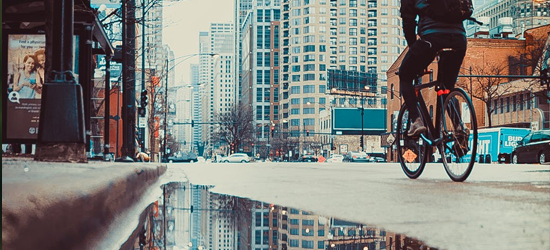
Active Design: How can we achieve this?
The below reports outline a range of recommendations for transforming the street environments. This focuses particularly around schools and other areas where physical activity could provide the most widespread benefits.
The necessity of green spaces for children’s development (pdf, 2.61 MB)
Unicef report showing the importance of green spaces for children’s development
RSPH: Routing Out Childhood Obesity (pdf, 10.86 MB)
Report on the benefits of active travel and how transforming areas around schools could benefit children and young people.
Spatial Planning for Health: Planning and Designing Healthier Places (2018) (pdf, 1.94 MB)
The built and natural environment is a key environmental determinant of health and wellbeing. This report will explore their relationship.
Active Design (2015) (pdf, 26.16 MB)
A fresh look at the opportunities to encourage and promote sport and physical activity through the design and layout of our built environment.
Cycling for Everyone (pdf, 18.56 MB)
Supporting people in local government and the transport sector to make cycling a more inclusive activity for everyone.
Active Travel: What are the benefits?
The following reports explore the benefits, and the walking and cycling statistics for previous years across the country.
In highlighting the evidence linking healthier lifestyles and movement, as well as the challenges faced, they can support not only the public in deciding to adopt a more physical mode of transport, but decision makers when building walking and cycle-friendly infrastructures.
Cycling and walking for individual and population health benefits (pdf, 762.07 KB)
This review found that walking and cycling benefit health in a number of ways.
Norfolk Cycling and Walking Plan (pdf, 21.24 MB)
To encourage Norfolk to travel more actively Norfolk County Council has developed a Cycling and Walking Action Plan.
Cycling: Near Misses (pdf, 938.16 KB)
This report explores the effects of near misses, including how people say they will affect their future cycling.
Walking and Cycling Statistics (2019) (pdf, 829.50 KB)
Reported annual walking activity, in terms of trips made and miles walked.
Useful links and tools
The following tools provide useful insight, and show the benefits of active design. These include walking and cycling scores, and a strategic planning tool.
If you’ve been unable to find what you’re looking for, get in touch to see if we can help. Alternatively, check out the rest of our insight section. There are several studies and insight reports that are sure to be useful to your project or delivery.

Walk Scores: Measure the walkability of any address
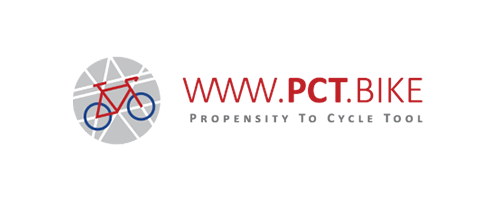
Propensity to Cycle Tool: Strategic Cycling Planning Tool

Bikedata: Cycling route mapping tool

HEAT: Estimate the value of increases in walking or cycling

Sustrans: Making it easier for people to walk and cycle
Keep updated.
Keep up-to-date with the latest physical activity information, insight, and resources by signing up to one of our newsletters.
By using our website, you agree to our Cookie Policy .
GOV.WALES uses cookies which are essential for the site to work. Non-essential cookies are also used to tailor and improve services. By continuing to use this site, you agree to our use of cookies.

Active Travel Act guidance
Guidance for local authorities planning and designing networks of walking and cycling routes.
Read details on this page
- Active Travel Act: guidance and forms and
- Walking and cycling (Sub-topic)
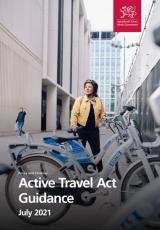
Active Travel Act guidance , file type: PDF, file size: 43 MB
Includes best practice on infrastructure design and gives guidance on how to provide related facilities such as cycle parking.
First published
Last updated, share this page.
- Share this page via Twitter
- Share this page via Facebook
- Share this page via Email
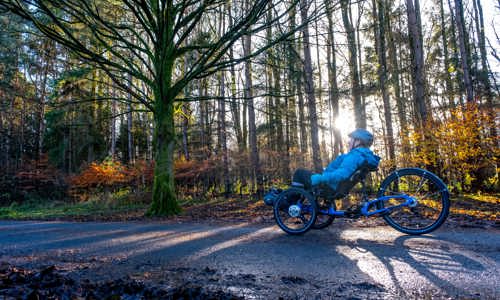
Walking, wheeling and cycling
Transport Scotland is committed to increasing levels of walking, wheeling and cycling for transport and leisure.
Photo courtesy of Sustrans Scotland
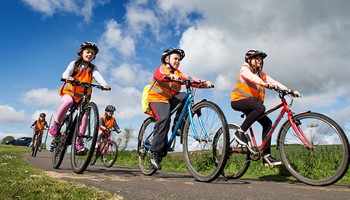
Developing an Active Nation
Read about our commitment to Active Travel including how we work with partners and fund projects throughout Scotland.
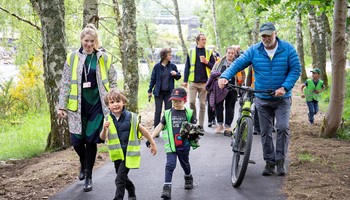
Walking and cycling policy
We're committed to making it easier to choose cycling and walking
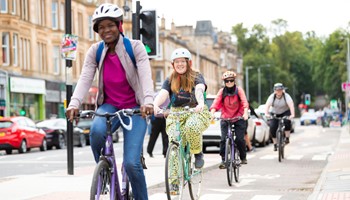
Cycling by Design
Guidance for permanent cycling infrastructure design on all roads, streets and paths in Scotland
More on Active Travel
Key publications.
- Active Travel Framework
- Cycling Framework for Active Travel
- Local Authority Active Travel Strategies
- Active Travel Strategy Guidance
- Active Travel funding opportunities
Mountain View, CA
Mountain View
Around the Globe
Hurricane tracker.
Severe Weather
Radar & Maps
News & features, winter center, news / severe weather.
Severe storm threat to continue into early week
In the aftermath of the powerful storms and catastrophic damage from late last week into the start of the weekend, AccuWeather forecasters say that the severe weather threat will not cease just yet.
By Alyssa Glenny , AccuWeather Meteorologist
Published Apr 28, 2024 8:10 AM PDT | Updated Apr 28, 2024 12:33 PM PDT
Damage from an intense tornado on April 27 was seen the morning after in Sulphur, Oklahoma. Video shows shredded buildings, thrown vehicles and huge piles of debris.
As an expansive storm continues to roll eastward across the Plains this weekend, it will spark yet another day featuring severe weather hazards for roughly a 900-mile stretch of the country.
Through Sunday night, the primary corridor at risk for severe thunderstorms will range from population centers like San Antonio to Omaha , Nebraska, and St. Louis , Missouri. Some of which are areas that have already faced one or several rounds of impacts from destructive storms over the last few days.
Storms continue to roll across the Plains
AccuWeather forecasters highlight that although residents should stay weather aware in the coming days as the threat for severe weather continues across portions of the Central U.S., conditions into early this week are not expected to ramp up quite as much as the widespread destruction observed previously on Friday and Saturday.

"The threat for severe weather will continue into the workweek, albeit at a slightly lower tenor, thanks to a lower risk for tornadoes," explained AccuWeather Senior Meteorologist Bill Deger.
Throughout the day on Sunday, the main push of storm energy will advance northeastward from the nation’s midsection into the midwestern states. Along its southern flank, a cold front will trail behind across Oklahoma and Texas, ushering moisture northward out of the Gulf of Mexico and into the South Central states.
"On Sunday, while much of the Plains catches their breath, the Mississippi Valley will become the focus for flooding downpours, strong winds and hail. A tornado or two still cannot be ruled out," noted Deger.

View of the AccuWeather Radar across Texas around 7:30 a.m. CT, Sunday, April 28th.
By Sunday morning, thunderstorms and hefty downpours were already spreading across central Texas to eastern Oklahoma. Morning hourly rainfall reports in Texas between Austin and Waco soared upwards of 1.50-2.00 inches in spots as pockets of intense rainfall spread from west to east in a concentrated line of storms.
GET THE FREE ACCUWEATHER APP
Have the app? Unlock AccuWeather Alerts™ with Premium+
Into the overnight period, the threat for flooding downpours will continue as the line of thunderstorms redevelops and advances eastward toward the Mississippi Valley. Ponding on roadways, travel disruptions and flash flooding will be a concern across a wide swath from northeast Texas into Arkansas and northwest Louisiana.
Activity shifts to the Gulf Coast
Into Monday, the corridor of rain and storms are projected to track south and eastward to the Mississippi Valley and Gulf Coast. As energy swings across southern Arkansas, Louisiana, Mississippi, far southwestern Tennessee and western Alabama, storms that develop from Monday to Monday evening will pose some risk for severe weather.

"By Monday, the risk will shift to the Lower Mississippi Valley and South. With a greater amount of moisture available in the atmosphere here, the primary concern will be from torrential rainfall. A few storms could still, however, bring gusty winds and hail," explained Deger.
Cities such as Jackson, Mississippi, New Orleans , and Mobile , Alabama, will fall within the hazard zone on Monday. Forecasters warn that thunderstorms may reach coastal locations like New Orleans by the late afternoon or evening hours.
A new storm emerges into the central states

As locations from Omaha, Nebraska, and Des Moines , Iowa, to Oklahoma City recover and cleanup efforts continue from the impacts severe storms brought last Friday and Saturday, AccuWeather meteorologists caution that another day containing risk will arise in the region early his week.
"A new storm emerging in the northern Plains on Tuesday will bring a damaging wind risk to the upper Midwest. Again, the threat for tornadoes will be lower than with the last storm on Friday and Saturday, but a rogue twister cannot be ruled out," added Deger.

Forecasters outline that metro areas such as Kansas City , Missouri, will also face some risk for severe weather late Tuesday. Motorists along interstates 20, 35, 40, 44, 70, 80 and 90 may contend with gusty crosswinds and localized downpours if traveling late in the day on Tuesday.
Midweek severe concerns
By Wednesday, yet another piece of energy will barrel into the Plains, elevating the chances for potent thunderstorms packing gusty winds, hail and downpours capable of producing flash flooding.

The risk from Wednesday to Wednesday night will extend from central Kansas on southward through central and even west-central Texas. Lone Star State residents in cities such as San Angelo, Wichita Falls and Dallas should be on the lookout come Wednesday for potent thunderstorms. Farther north, key metro areas that will contend with severe weather chances once again will include Oklahoma City and Wichita.
More to read:

Want next-level safety, ad-free? Unlock advanced, hyperlocal severe weather alerts when you subscribe to Premium+ on the AccuWeather app . AccuWeather Alerts ™ are prompted by our expert meteorologists who monitor and analyze dangerous weather risks 24/7 to keep you and your family safer.
Weather News

LIVE: Death toll climbs to 4 after devastating tornadoes

How to recognize a 'radar-confirmed tornado'

The difference between tornado watches and warnings
Top Stories
Trending Today
Accuweather early, accuweather prime, forecast victories.
LATEST ENTRY
Death toll climbs to 4 after devastating tornadoes

7 hours ago

10 types of tornadoes that occur in the US

Weather Forecasts
Spring fever: Northeast cities chasing 90-degree highs

First-ever photograph of a tornado from 140 years ago likely a fake

Featured Stories
Overrun Japanese town erects barrier to block photos of Mount Fuji

Weather Blogs
Major greenhouse gases continued steady climb in 2023

A lake in Mexico’s ‘magical town’ is disappearing

Offshore wind projects are making a comeback

More than 100 prisoners flee after rainfall destroys prison in Nigeria

We have updated our Privacy Policy and Cookie Policy .
Get AccuWeather alerts as they happen with our browser notifications.
Notifications Enabled
Thanks! We’ll keep you informed.
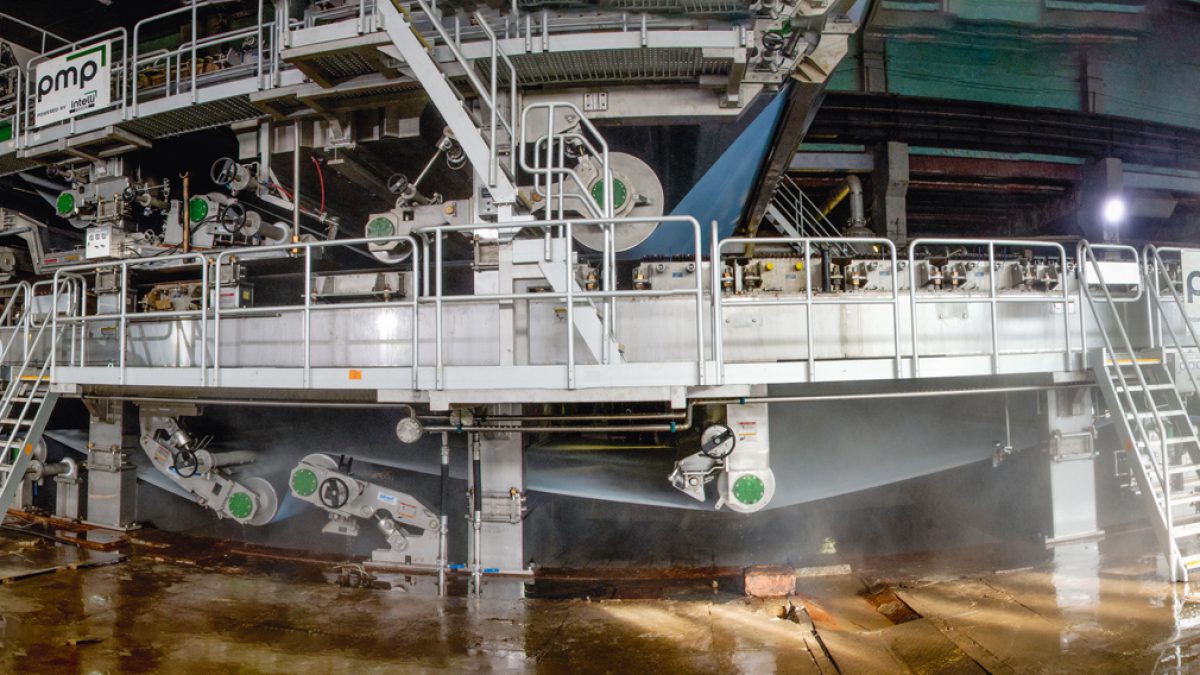
21 Jan 2020
Ilim Group invests $120m in Siberia

Ilim Group , one of Russia’s largest pulp, paper and corrugated board producers, has officially completed a large-scale modernisation of its paper machine at its mill in the city of Bratsk (Irkutsk region).
As part of the project, the company invested more than US$120m to increase the output of the mill, by as much as 50% — from 198,000 tonnes to 300,000 tonnes per year.
Thanks to the modernisation project, the speed of the paper machine increased from the 550 to 800m per min, while productivity has now risen to 830 tonnes per day.
At the same time, the company is continuing reconstruction of its pulp line, which is expected to be completed next year and will result in the increase of its capacity up to 173,000 tonnes per annum.
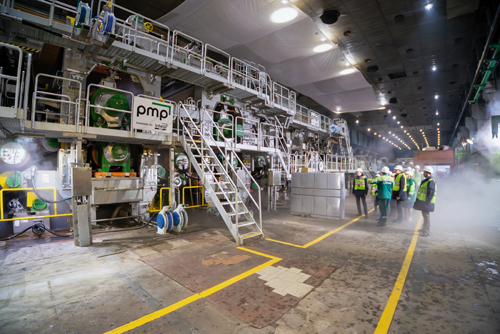
World class
Denis Russkikh, Head of Production Department at Ilim Bratsk, comments, “The project has allowed us to change the paper machine dramatically. In fact, this is now essentially a new machine, as we have replaced almost all the key components and units, using some of latest technology available. We reviewed the data from many installationas around the world to ensure we were using the best systems possible.”
In addition to the paper machine, the company plans a complete reconstruction of the existing chemical water treatment plant and the installation of a new water treatment plant that will have a design capacity of 400 m3 per hour.
Over the coming 12 months, Ilim Group will commission a new woodyard at the Bratsk plant. It is planned that the new woodyard will include three lines with a total capacity of five million cubic meters of chips per year. The technology that will be used in its operations will contribute to a significant improvement of the quality of wood chips and reduce the consumption of resources, including electricity and water.
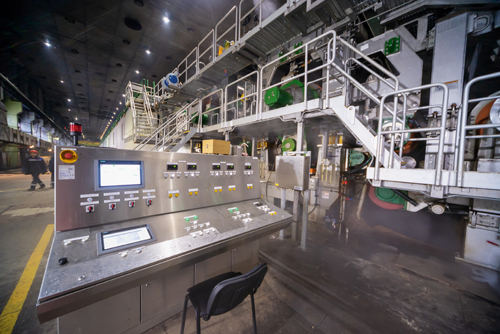
Group plans ongoing
According to Ksenia Sosnina, CEO of Ilim Group, the expansion of the Bratsk mill is part of Ilim’s large-scale investment program, which has a total cost of more than US$3bn.
Sosnina comments, “The modernisation at the Bratsk mill has affected the entire technological chain of paper production at the facility – from pulping operations to the packaging of finished products and logistics issues.”
The allocated investments will also allow the company to significantly improve the quality of finished products.
Wide product range
At present, the Bratsk mill is one of the largest paper and board producers in Russia. The mill has a diverse portfolio of products, including pulp, kraftliner, fluting, wood chemical products and round timber.
As part of Ilim’s plans, the expansion of the Bratsk mill will provide an opportunity to significantly strengthen its positions in the growing Asian market, particularly in the segment of packaging materials.
Particular hopes are put on the increase of exports to the Chinese market, with the Shandong Province being one of the most important export destinations in China, if not the entire Asian region.
Alexander Lykhin, Vice President of Ilim Asia and head of the Chinese branch of the company, comments, “The recent tightening of legislation in regard to food packaging safety in China will create a shortage of packaging materials in the local market. This is coupled with the introduction of a ban on fluorescent substances, as well as the expected shortage of raw materials for the production of testliners, particularly due to restrictions on the import of recovered fibre and the closure of old, environmentally problematic mills.”

International growth
In addition to the expansion of the Bratsk mill, the more active expansion of Ilim into the Asian region will be supported by the construction of a new pulp and paper mill at its other Siberian facility, which is located in the city of Ust-Ilimsk. It is planned that capacity of this mill will reach 600,000 tonnes per year. The volume of investment at the Ust-Ilimsk mill will amount to US$1bn, while its official commissioning is scheduled for the end of 2021. By this time, the volume of pulp production at the plant will also increase, reaching 130,000 tonnes annually. As a result of the project, total capacity of the Big Ust-Ilimsk branch of the company will reach 1.5m tons of finished products per year.
As a result of this significant investment project, the total output of the company will grow by 40% by 2024 and amount to 4.4m tons of various products.
Share this article
Join our newsletter.
Sign up to our weekly newsletters for updates on articles, interviews and events
Further Reading
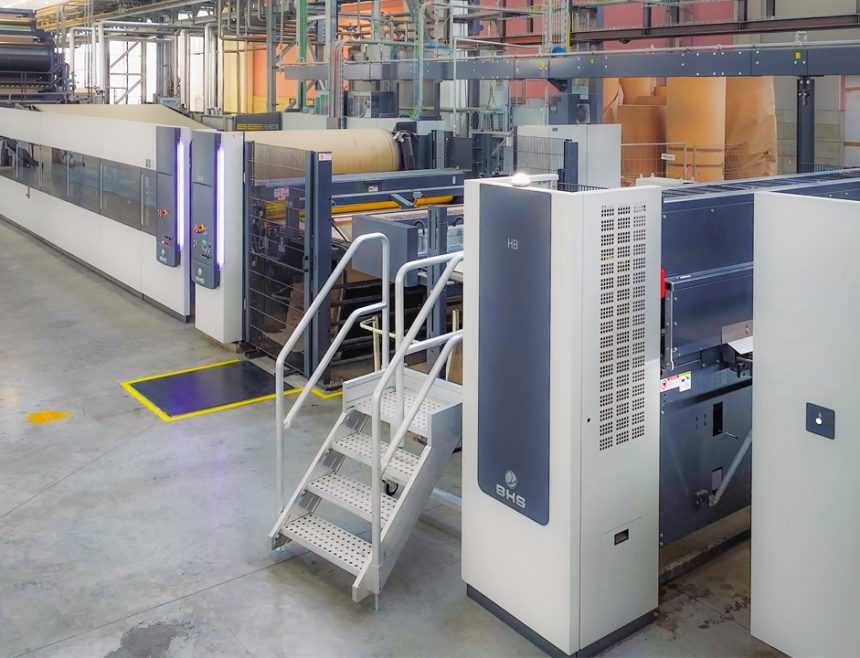
FEPA adds more corrugated capacity
With its factory located about 18km north of Parma in the Emilia-Romagna region, FEPA SpA was founded in 1960, originally known as Scatolificio Sandra SpA. FePa, which is an acronym…
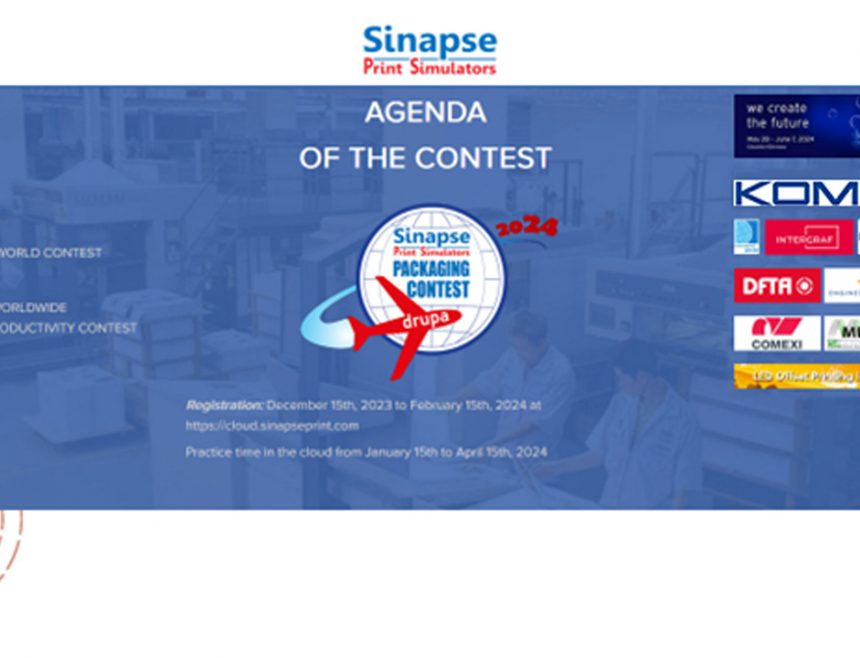
The next generation gears up with Design Challenge, with finals at drupa
Worldwide Charity Packaging Productivity Contest has reached its semi-finals: forming the talent to impact on the future generation in the industry.
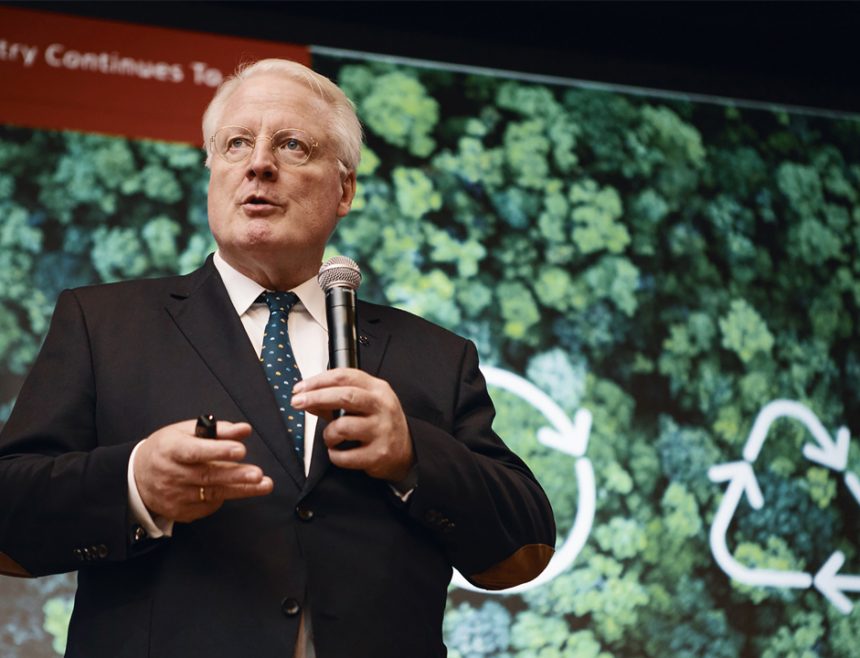
drupa gets serious!
We know the back story; the pandemic forced the abandoning of drupa in 2020 and then again in 2021, so it has been a long time since the global print…

Get in [ edit ]

Get around [ edit ]
See [ edit ].

Angara village , an open-air museum in some distance from Bratsk featuring Russian houses, the church and utensils of XVII—XX centuries as well as Evenk chums .
Go next [ edit ]
- Has custom banner
- Sleep listing with no coordinates
- Has map markers
- Outline cities
- Outline articles
- City articles
- Has Geo parameter
- Irkutsk Oblast
- All destination articles
- Has routebox
Navigation menu

IMAGES
COMMENTS
A desire to keep things simple may help to explain the 'othering' of wider active travel modes in literature. Design - leading on from the above point, designers of the transport system may shrink from trying to cater for a large set of heterogeneous forms of movement and this may also cast light on the currently narrow use of 'active ...
Active Travel Toolbox: a collection of guides, tools and case studies to help local authorities deliver walking and cycling schemes in their area. Active Mode Appraisal Toolkit: a spreadsheet ...
This paper reviews existing evidence on (1) how to design and (2) how to implement active travel infrastructure (hereafter "ATI") from the perspective of behavioral science, with a view to assist policymakers and academics interested in implementing well-designed ATI. We consider both aspects of ATI policy together, because neither alone ...
Active travel, as part of green transport, is broadly defined as "travel in which the sustained physical exertion of the traveller directly contributes to their motion" (Cook et al., 2022) (p. 154 ...
Active Design promotes physical activity, health and stronger communities through the way we design and build our towns and cities. It has 10 principles to inspire and inform the layout of cities, towns, villages, neighbourhoods, buildings, streets and open spaces, to create more opportunities for physical activity. You can find out exactly how ...
Description. Active travel, also described as active transport or transportation, is defined as making journeys that involve a level of physical exercise [UK Dept for Transport, 2022 ]. It can include walking, cycling, skating or skateboarding (to name a few) and is highly favourable when commuting to work or school.
We find that research on moderators of the success of active travel initiatives points to the importance of proximity, connectivity, and safety perceptions, particularly among women, older adults and children. We review empirical findings on which design elements make infrastructure both safe to use and perceived as safe.
18th May 2023. New guidance on how the design of our environments can help people to lead more physically active and healthy lives has been published today. The third iteration of our Active Design guidance, supported by Active Travel England (ATE) and the Office for Health Improvement and Disparities (OHID), has been produced to help create ...
Theme 1: supporting active travel. Theme 2: active, high-quality places and spaces. Theme 3: creating and maintaining activity. Where we live, work, travel and play has a major role in shaping our activity choices. By applying Active Design's 10 principles to our built and natural environments, we can create active environments that encourage ...
Details. Active Travel England ( ATE) has developed a suite of tools to support the development of designs and the assessment of design quality for active travel interventions and schemes. These ...
It also leads to the Professional Certificate or Diploma in Active Travel. The Department for Transport Cycle Proofing Working Group has listed the IHE Professional Certificate & Diploma in Active Travel as an acknowledged product for engineers planning and designing active travel infrastructure. Learning Outcomes
Transport for Greater Manchester and the region's Combined Authority have completed an important step in the implementation of their Bee Network walking and cycling plans, publishing an Active Travel Design Guide that sets out the key rules for designing future schemes in its ten boroughs.. The document is 27 pages (PDF) of perfect bedtime reading for anyone who dreams of protected cycle ...
For example, Razieh Zandieh's observations that a sense of beauty, safety, and quiet was crucial for increasing active travel for older adults. Design is well-placed to translate new ...
Active Travel & Design. The term Active Travel is when you use alternative forms of transport for shorter journeys to the car, be it a trip, commute or the school run. Active Travel could be walking or cycling, or any other physically active means of transport for part or all of your journey. Some parts of the UK will find this easier than others.
use. Through protecting green infrastructure and including it in active travel design it can aid well-functioning ecosystems and the biodiversity they support whilst providing natural solutions that help build resilience of the environment, people and communities. 2.3: We welcome the addition of the Environment (Wales) Act within the guidance,
The Active Travel Act guidance brings together previous advice and feedback from a public consultation and clearly sets out what is expected from councils when they are designing new infrastructure with Welsh Government funding. This year alone the Welsh Government is investing £75 million in active travel, more than any other country in the ...
Active Travel Act guidance, file type: PDF, file size: 43 MB . PDF. 43 MB. If you need a more ... If you use assistive technology please tell us what this is. Details. Includes best practice on infrastructure design and gives guidance on how to provide related facilities such as cycle parking. Related. Walking and cycling (Sub-topic)
Read about our commitment to Active Travel including how we work with partners and fund projects throughout Scotland. ... Cycling by Design. Guidance for permanent cycling infrastructure design on all roads, streets and paths in Scotland. More on Active Travel. Key publications. Active Travel Framework; Cycling Framework for Active Travel ...
In the aftermath of the powerful storms and catastrophic damage from late last week into the start of the weekend, AccuWeather forecasters say that the severe weather threat will not cease just yet.
of active travel infrastructure. We also draw on evidence regarding support for climate policy and opinion formation more generally. The paper offers an evidence-based guide for policymakers to design and implement active travel infrastructure, seen through the lens of behavioral science. It also highlights fruitful avenues for future research.
Ilim Group, one of Russia's largest pulp, paper and corrugated board producers, has officially completed a large-scale modernisation of its paper machine at its mill in the city of Bratsk (Irkutsk region). As part of the project, the company invested more than US$120m to increase the output of the mill, by as much as 50% — from 198,000 ...
The Supply base of INCOM LLC is the area of the forest fund of the Irkutsk region. The total area of the Supply base is 69,4 million ha. Forest lands comprise 64,7 million ha and non-forest land 4,7 million ha. Production forests make up 50% of the Supply base area, buffer forests - 23%, reserve forests - 27%.
Eat. Drink. Sleep. Go next. Bratsk ( Russian: Братск brahtsk) is a large city in Irkutsk Oblast on the Baikal-Amur Mainline . Angara River at Bratsk.
The design for the Jewish monument was inspired by the only known picture of a Jewish tombstone to have stood in the cemetery. Advertisement The reopening of the Jewish Cemetery of Irkutsk on ...